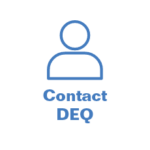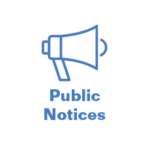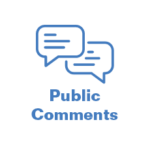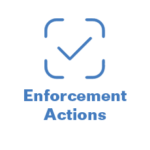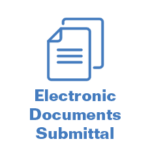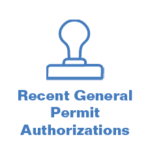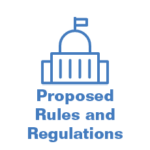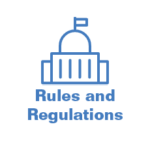- Home
- Public
- Resources
- Advanced Search
- Advisory Boards
- Careers
- District Offices
- e-Payment
- Enforcement Actions
- Meet the Director
- Mission Statement and Values
- Nondiscrimination Policy
- Outreach and Public Information
- Public Comments Online Portal
- Public Notices
- Records Requests
- Spill and Complaints
- State of the Environment
- Topics
- Divisions
- News
- Calendar
Nonpoint Source
- Home
- Water Quality
- Watershed Protection
- Nonpoint Source
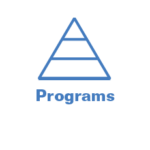
The DEQ undertakes enforcement actions to preserve safe environmental conditions throughout Wyoming.
This page contains information on the enforcement actions that the Water Quality Division may undertake, as well as a record of enforcement actions that have been undertaken by WQD.
If the download box is not working below, please click here.
Electronic document submittal is available for WQD permit applications, reports, and other communications.
Visit: WDEQ Water Quality Division Downloads
You do NOT need to follow up the electronic submission with a hard copy submission unless you are specifically contacted by a WQD staff person with a request to do so.
Need to report a spill or complaint? Please visit https://deqspills.wyo.gov/home
Submitting a public comment? WQD is unable to accept public notice comments through this system. Refer to the public notice document for instructions on how to submit comments or visit https://wq.wyomingdeq.commentinput.com/comment/search.
NOTICE: All applications for water distribution systems and/or sewage collection systems that are within the Cheyenne Board of Public Utilities (BOPU) district shall be submitted to the BOPU for approval. Contact Frank Strong or Bryce Dorr at (307) 637-6460, ENGreview@cheyennebopu.org, or http://cheyennebopu.org for additional information.
The DEQ Water Quality Division accepts comments on all permits authorized under a general permit for a period of 30 days, as provided for in W.S. 35-11-801(d).
Interested persons may mail or fax comments to the main Cheyenne office. The ‘Date’ column in the table below indicates the date the authorization was posted to the website. Comments must be received before 5:00 pm on the 30th day after the authorization was posted to the website. For example, comments for an authorization posted on 10/1/18 must be received by 5:00 p.m. on 10/31/18. DEQ does not accept emailed comments.
You may sort the table by posting date or search for the type of general permit, the county where the permit was issued, the permit number, or the name of the person or company to whom the permit was issued.
If you wish to review the general permit documents, please go to the web page for each permitting program:
- Storm Water Construction, Mineral Mining, and Industrial General Permits.
- Underground Injection Control (UIC) General Permits
- Water and Wastewater Construction General Permits.
- WYPDES General Permits
If the download box is not working below, please click here.
The Water Quality Division will present proposed revisions to Water Quality Rules Chapter 1, Wyoming Surface Water Quality Standards; and Chapter 2, Permit Regulations for Discharges to Wyoming Surface Waters to the Water and Waste Advisory Board at their June 13, 2024 meeting, starting at 9:00 a.m. The proposed revisions to Chapter 1 (1) fulfill the federal requirements at 40 CFR § 131.20, (2) restructure and align requirements with state law and federal law, regulations, and guidance; (3) revise designated uses and remove the designated use classification system; and (4) provide minor updates to specific water quality criteria. The proposed revisions to Chapter 2 (1) update references to the designated use classification system to reflect proposed revisions to Chapter 1; and (2) incorporate provisions related to fish toxicants, aquatic pesticides, and short-term sediment disturbance that Water Quality Division proposes to move from Chapter 1 to Chapter 2. More information is available at: http://deq.wyoming.gov/shwd/wwab/ under the “Upcoming Meeting” tab
All official Wyoming State Rules and Regulations are kept at the Wyoming Secretary of State’s Office. Click here to view all current Rules and Regulations.
Nonpoint Source
As part of the Watershed Protection Program of the Wyoming Department of Environmental Quality (WDEQ), Water Quality Division (WQD), the Wyoming Nonpoint Source Program works through voluntary and incentive methods to preserve and restore the quality of Wyoming’s surface and ground water resources.
To do this, the Nonpoint Source Program relies on voluntary implementation of nonpoint source pollution reduction projects by individual landowners, local groups, and other state, local, and federal government agencies in a cooperative effort to address water quality improvements on a watershed scale.
Nonpoint source pollution is caused by surface water runoff that is diffuse in nature and often widespread, making it difficult to assess the source of the problem. It is different from point source pollution, which can be traced back to a single defined source.
Nonpoint source pollution occurs when runoff from rainfall or snowmelt travels over and/or infiltrates through the ground and picks up contaminants. These contaminants are deposited into streams, lakes, rivers, and ground water.
Nonpoint source pollution is generally associated with human land-disturbing activities such as:
- Urban development
- Construction
- Agriculture
- Recreation
- Silviculture
- Mineral exploration
Common nonpoint source contaminants include the following:
- Fertilizers and pesticides from agricultural and residential activity
- Oil, grease, and toxic chemicals from urban runoff
- Sediment from construction activity or stream bank erosion
- Bacteria and nutrients from livestock and pet waste, or from failing septic systems
Water quality affects all Wyoming citizens. In addition to providing safe drinking water, clean water supports agriculture, recreation, and tourism, and is necessary for healthy ecosystems.
Even if we don’t live next to a stream or river, activities that each of us do can affect water quality. At any moment, we are each located in a watershed. A watershed is an area of land that drains to a common point, usually a stream, river, wetland, or lake. Think of a big bathtub! Watersheds can be very small, just a few acres, or they can be very large, encompassing a good portion of the state or multiple states, depending on what drainage point you are considering. Small watersheds make up larger watersheds.
Runoff from rainfall events or snowmelt travels over and through the land in a watershed. As it does, it may pick up pollutants that are ultimately deposited into streams, rivers, or lakes within the watershed. Thus activities that occur throughout the watershed, not only those directly adjacent to waterbodies, can affect the quality of water that we each rely on for drinking water, fishing, boating, agriculture, and many other uses.
Therefore, restoration and protection of our water quality resources is something each citizen can help achieve. Some restoration and protection projects require extensive planning and coordination between local organizations, private landowners, and government agencies. However, there are also simple activities that each of us can do to prevent nonpoint source pollution to Wyoming’s streams, lakes and rivers. Residents should understand that while the actions of a single person may seem insignificant, when combined with similar actions of hundreds or thousands of other residents, the potential to pollute their local waters is very real. The quart of oil dumped down a storm drain by one person on a given Saturday may be repeated hundreds of times that day. Thus, while each of the following activities may seem minor, the combined effort of citizens across the state can make a major improvement in our water quality!
Ten Simple Things You Can Do To Prevent Nonpoint Source Pollution
- Use the minimal amount of fertilizers and pesticides needed for your lawn or garden. Read label directions carefully! Do not apply pesticides or fertilizers to your lawn or garden before or during rain.
- Consider planting native plant species in your yard that use less water and have fewer or no pesticide and fertilizer requirements.
- Establish plants on bare areas of your yard to prevent soil erosion.
- Keep lawn clippings, leaves, and other yard waste out of storm drains and gutters. Compost yard waste and kitchen waste and leave lawn clippings on your lawn.
- Make sure that household chemicals and automotive products such as paints, cleaners, oil, and antifreeze are disposed of properly. Contact your local government to see if there is a hazardous household waste collection program in your community. Select less-toxic or non-toxic household cleaners when possible.
- If caring for livestock on your property, manage animal waste to minimize mixing with stormwater runoff.
- Pick up pet waste.
- Clean up spilled oil, antifreeze and brake fluids. Never put used oil or other chemicals down storm drains and street gutters—these outlets drain directly to our streams, rivers, and lakes!
- Wash your car on the grass or at a car wash. Washing your car on the driveway means that soap and dirt will wash into the nearest storm drain.
More ideas on EPA’s Website “What You Can Do To Prevent NPS Pollution”
More ideas on the City of Casper’s Stormwater Management Website
Nonpoint sources of pollution contribute to the majority of Wyoming’s surface water quality impairments.
The three nonpoint source pollutants causing the majority of Wyoming’s surface water quality impairments are bacterial pathogens, sediment, and selenium.
Bacterial Pathogens
Nonpoint sources of pathogenic bacteria such as Escherichia coli commonly include faulty or inadequate septic systems, livestock operations, pet waste, and wildlife. Exposure to elevated levels of pathogenic bacteria can be a public health safety concern if contaminated water was accidentally ingested during recreation uses of the water body.
Sediment
Eroding stream banks and surface runoff over bare land contribute sediment to Wyoming’s waters. Human land-disturbing activities that can contribute to erosion and sediment transport include:
- Crop production
- Construction
- Roads
- Overgrazing by livestock or wildlife
- Timber harvesting
- Urban development
- Mining
Sediment loading increases turbidity which limits the amount of sunlight reaching aquatic plants and also affects fish spawning grounds and macroinvertebrate communities. In addition, sediment often transports other pollutants, such as phosphorus, nitrogen, pathogens, and heavy metals, which can attach to the sediment particles.
Selenium
Selenium is an essential trace element to humans and animals, but in higher concentrations can be toxic. Selenium bioaccumulates and can negatively impact fish and waterfowl reproduction.
Selenium naturally occurs in the soils of several areas of Wyoming, particularly in areas derived from marine shales. Precipitation and irrigation of selenium rich soils can dissolve and mobilize selenium to surface and ground waters.
Thus, while some sources of selenium occur naturally, anthropogenic activities that can increase selenium loading to surface waters include irrigated agriculture return flow, mining, and oil and gas production.
Riparian areas are the narrow strips of land adjacent to streams, rivers, lakes, ponds, and wetlands. They are characterized by plant species that are adapted to a wetter environment than plant species that dominate drier, upland environments. In arid and semi-arid climates, such as Wyoming, riparian areas can usually be clearly distinguished as the green areas adjacent to streams, rivers, and lakes.
While riparian areas comprise only a very small portion of the land area in the state, they are an extremely important component of healthy watersheds and ecological function. Riparian areas provide critical habitat for wildlife. Relating to water quality, the ecological benefits of riparian areas are numerous. By acting as buffers between upland areas and open water, they help filter pollutants such as nutrients and sediment. Healthy riparian vegetation helps to reduce stream bank erosion and maintain stable stream channel geomorphology. Vegetation also provides shade, which works to lower water temperatures. Lower water temperatures support higher dissolved oxygen levels which are important to maintain fisheries.
Many land-uses have the potential to negatively affect riparian areas. Urban development, improper grazing practices, improper timber harvesting practices, and over-use from recreational activities are just a few examples. Consequently, there are areas in Wyoming where a functional, healthy riparian zone no longer exists. Streams that were once lined with willows or other riparian species may now only be lined with limited grass or sedges that are not capable of stabilizing stream banks.
Many local organizations, agencies, and landowners across Wyoming have worked to implement best management practices to restore or protect riparian areas, but many areas remain that need restoration or protection measures. Activities such as proper grazing management, proper timber harvesting practices, proper planning of urban development, and establishing “no-mow” zones in urban parks all work to protect riparian areas. Restoring degraded riparian areas may involve a wide variety of best management practices, including planting native species to re-vegetate the area, using natural materials to stabilize stream banks, and reshaping stream channels to restore stable geomorphology.
Links to more information about Riparian Areas
| NAME/EMAIL ADDRESS | PROGRAM | PHONE |
|---|---|---|
| David Waterstreet, Program Manager | Watershed Program | 307-777-6709 |
| Clean Water Act (CWA) Section 401 Certification and Turbidity Waivers | ||
| Eric Hargett (Cheyenne) | CWA Section 401 Certification, Turbidity Waivers | 307-777-6701 |
| Data Quality Assurance and Quality Control (QA/QC) | ||
| Jillian Scott (Cheyenne) | Data QA/QC | 307-777-6372 |
| Nonpoint Source Pollution Program | ||
| Alexandria Jeffers (Cheyenne) | Nonpoint Source Program | 307-777-6733 |
| Surface Water Monitoring Program | ||
| Jeremy Zumberge, Program Supervisor (Sheridan) | Surface Water Monitoring Program | 307-675-5638 |
| Tavis Eddy (Lander) | Surface Water Monitoring Program | 307-335-6957 |
| Eric Hargett (Cheyenne) | Surface Water Monitoring Program | 307-777-6701 |
| Jason Martineau (Sheridan) | Surface Water Monitoring Program | 307-675-5632 |
| Triston Rice (Cheyenne) | Surface Water Monitoring Program | 307-777-6353 |
| Chad Rieger (Sheridan) | Surface Water Monitoring Program | 307-675-5637 |
| Michael Wachtendonk (Lander) | Surface Water Monitoring Program | 307-335-6751 |
| Surface Water Quality Standards | ||
| Lindsay Patterson, Program Supervisor (Cheyenne) | Surface Water Quality Standards | 307-777-7079 |
| Kelsee Hurschman (Cheyenne) | Surface Water Quality Standards, Harmful Cyanobacterial Blooms | 307-777-2073 |
| Madeleine Hamel (Cheyenne) | Surface Water Quality Standards, National Environmental Policy Act (NEPA) | 307-777-7050 |
| Total Maximum Daily Load (TMDL) Program | ||
| Ron Steg, Program Lead (Lander) | Total Maximum Daily Load (TMDL) | 307-335-6980 |
| Bret Callaway (Cheyenne) | Total Maximum Daily Load (TMDL) | 307-777-5802 |
| Water Quality Lab | ||
| Steve Vien, Lab Supervisor (Cheyenne) | Water Quality Lab | 307-777-7654 |
| Alexandra Cook (Cheyenne) | Water Quality Lab | 307-777-7151 |
| Marisa Latady (Cheyenne) | Water Quality Lab | 307-777-6783 |
| Vacant (Cheyenne) | Water Quality Lab | 307-777-3770 |
What are BMPs?
The term “Best Management Practices,” or “BMPs,” describes acceptable practices that can be implemented to manage, prevent, and/or reduce nonpoint source pollution. A BMP can be a physical practice that you install on the ground, such as off-channel water, stream buffers, or irrigation improvements, to help improve and restore water quality. A BMP can also be a part of the process that you use to plan, implement, and/or monitor water quality improvement or protection projects. Examples include BMP effectiveness monitoring, …
Using BMPs
Identifying and selecting the appropriate BMPs for your project is critical to ensuring that the project will provide the most effective pollution management for the water quality concern. Many factors could impact BMP selection, including but not limited to the type and/or severity of the nonpoint source pollution of concern and/or land use and management goals.
Several resources are available to assist you in BMP selection, such as the resources on this page and many agencies and organizations that work to address nonpoint source pollution. The Nonpoint Source Program encourages you to reach out early and often to professionals in the field for technical assistance. If you are not sure who or what agencies are best suited to assist with your project, please contact the Nonpoint Source Program for help connecting with the appropriate resources.
BMP Resources
This page contains a variety of resources for project sponsors to use in determining and implementing suitable best management practices for reducing and monitoring nonpoint source pollution. In the table below, you will find the Nonpoint Source Program’s published BMP manuals and other key partner materials in PDF format. The Nonpoint Source Program manuals are incorporated into the Nonpoint Source Management Plan and are consistent with Clean Water Act Section 319 guidance.
The links below are connected to several additional resources from the University of Wyoming, the National Resources Conservation Science, the United States Department of Agriculture, the Wyoming State Forestry, and the Environmental Protection Agency.
- National Best Management Practices for Water Quality Management on National Forest Lands Volume I: National Core BMP Technical Guide (USDA, Forest Service, 2012 – FS-00a)
- UW Cooperative Extension Service’s Best Management Practices: Monitoring Guidance Webpage
- Natural Resources Conservation Service’s Electronic Field Office Technical Guide (e-FOTG)
- Wyoming State Forestry Division BMPs Webpage
- Nonpoint Source Pollution: Technical Guidance and Tools Webpage
There are several great places to find more information about nonpoint source pollution, waterways in your community, and other programs in Wyoming. Please find some of the Nonpoint Source Program’s most frequently used or recommended resources below:
WDEQ and Other State Agency Resources
- Wyoming Assessed Waters Web Map
Interactive web map that complements Wyoming’s 2020 Integrated 305(b) and 303(d) Report and shows the assessed streams, rivers, lakes, and reservoirs in Wyoming. Click on the assessed waterbody you are interested in to view its Fact Sheet and to download Shapefiles.
- Wyoming DEQ’s Harmful Cyanobacterial Blooms Website
This website provides news, photos, resources, and interactive tools to view advisories and make reports on HCBs.
- WDEQ Groundwater Pollution Control (GPC) Program Webpage
The GPC Program is part of the Water Quality Division’s Groundwater Program and evaluates potential impacts on the groundwater of the State by activities permitted at the local, state, or federal level. Visit their webpage for more info on program duties.
- Barnyards and Backyards Webpage
This page, created by the University of Wyoming’s Cooperative Extension Service, provides a variety of articles written by natural resource experts for the small acreage landowner, new landowner, or backyard enthusiast.
EPA and Other Federal Resources
- “How’s My Waterway?” Webpage and Tool
This tool provided by EPA pulls together water quality information and data from many contributing agencies so that you can learn about your water, explore data, and find out what’s happening in your community related to water quality.
- Polluted Runoff: Nonpoint Source (NPS) Pollution Webpage
This EPA webpage contains a deeper explanation of nonpoint source pollution, along with info on ways you can take action to protect your water quality. Links to webinars, Success Stories, and grant opportunities are provided.
- Watershed Academy Webpage
This EPA resource provides learning modules, webcasts, watershed resources, and materials for students and educators on the principles of the watershed approach and the value of working at a watershed level.
- National Stormwater Calculator Webpage
This page contains the EPA National Stormwater Calculator (SWC), which estimates the annual amount of rainwater and frequency of runoff from a specific site using green infrastructure as low-impact development controls. The SWC is designed for use by anyone interested in reducing runoff from a property, including site developers, landscape architects, urban planners, and homeowners.
- Clearinghouse for Environmental Finance
This EPA database provides a one-stop shop for communities to learn about and access available funding and agency resources when working to improve environmental conditions. It provides over 1,800 funding and financing opportunities and informational resources from EPA’s air, water, and land programs. You are also able to search for funds and resources by state.
- Nonpoint Source Success Stories Webpage
EPA coordinates with state Nonpoint Source Programs to publish stories that highlight nonpoint source pollution-impaired water bodies where restoration efforts have led to documented water quality improvements. Use the map to select and view Success Stories for Wyoming.
Other Resources
- City of Casper’s Stormwater Management Webpage
This page contains information on the City of Casper’s Stormwater Management Program, along with resources on the watershed, local stormwater publications and programs, and FAQs.
- CountyOffice.org
If you are trying to reach government offices anywhere in the United States, County Office can provide you with the most accurate, reliable, and up-to-date information available.
Requests for FY24 Applications are Now Open
Clean Water Act Section 319 Grant
Clean Water Act Section 205(j) Grant
Final Proposals due October 4, 2023
The Nonpoint Source Program of the Wyoming Department of Environmental Quality (WDEQ), Water Quality Division is pleased to announce that it is now accepting project applications for the federal fiscal year 2024 (FY24) Clean Water Act (CWA) Sections 319 and 205(j) grants. The Nonpoint Source Program awards grant funds through an annual competitive process to address water quality issues resulting from nonpoint source pollution. The Nonpoint Source Task Force will review applications and make funding recommendations for the FY24 CWA §§ 319 and 205(j) grants in the fall of 2023.
The Nonpoint Source Program relies on the voluntary and cooperative implementation of best management practices by local entities (e.g., watershed groups, nonprofits, government agencies, and private citizens/landowners) to restore and protect the quality of Wyoming’s surface and groundwater resources. The WDEQ assists and incentivizes entities with these efforts via the §§ 319 and 205(j) grants.
Section 319 Grant
Through the Section 319 grant, the WDEQ provides a little under $1,000,000 each year to public and private entities, such as conservation districts, nonprofit organizations, watershed groups, school systems, and government agencies, to design and implement projects that reduce and prevent nonpoint source pollution. The WDEQ and the Nonpoint Source Task Force prioritize 319 funding for on-the-ground watershed restoration/protection projects and projects that address specific water quality topics that are documented as a priority by the WDEQ. The FY24 Section 319 Grant: Request for Applications (RFA) provides further guidance on project eligibility and program priorities.
- Funding Source: The United States Environmental Protection Agency (EPA), through the WDEQ, under Section 319(h) of the Federal Clean Water Act.
- Applicant Eligibility: Public and private entities, as described in the RFA. Individuals are limited to applying for demonstration projects only.
- Project Eligibility: Generally, all projects in Wyoming that show the real potential to improve water quality by reducing nonpoint source pollution are eligible to apply.
- Specific project types and components are not eligible. For example, 319 funds cannot be awarded to projects that focus on research, projects that are in response to regulatory action, and projects addressing point source pollution.
- Please thoroughly read and understand the eligibilities described in the RFA before applying.
- Total Estimated FY24 Funding: Approximately $967,000.
- Individual Project Applications: Recommended $10,000-$300,000.
- Cost Share: A 40 percent cost share (match) is required. The match must be from non-federal sources (i.e., state, local, private) and may include cash and/or in-kind contributions.
Section 205(J) Grant
The WDEQ also provides approximately $40,000-$80,000 each year, through the Section 205(j) grant, to local planning agencies (i.e., cities, towns, counties, and conservation districts) for water quality management planning and assessment activities that will reduce and prevent nonpoint source pollution. The WDEQ and the Nonpoint Source Task Force prioritize 205(j) funds for water quality management planning and assessment projects that focus efforts on watersheds in Wyoming with impaired waterbodies. The FY24 Section 205(j) Grant Request for Applications provides further guidance on project eligibility and program priorities.
- Funding Source: The United States Environmental Protection Agency (EPA), through the WDEQ, under Sections 205(j) and 604(b) of the Federal Clean Water Act.
- Applicant Eligibility: Local planning agencies only.
- Project Eligibility: Generally, all water quality management planning and assessment projects in Wyoming. Examples include watershed-based plan development, monitoring programs, education/outreach programs, and capacity building.
- 205(j) funds may not be used to fund the implementation of control measures (i.e., inspections, enforcement, installing best management practices) or to meet monitoring requirements of any enforcement action, permit, or public water supply regulation.
- Please thoroughly read and understand the eligibilities described in the RFA before applying.
- Total Estimated FY24 Funding: Approximately $80,000.
- Individual Project Applications: Recommended $10,000-$40,000.
- Cost Share: A 25 percent cost share (match) is required. The match must be from non-federal sources (i.e., state, local, private) and may include cash and/or in-kind contributions.
Annual Request for Applications
Downloadable resources for the FY24 §§ 319 and 205(j) grants are provided in the document table below. All project sponsors should thoroughly read the applicable Request for Applications (RFA) and must use the correct and current application forms. Applications on past years’ forms will not be accepted. All project sponsors and interested parties are encouraged to do the following:
- Download PDF documents of interest before reviewing and completing them. This is highly recommended for the applications to avoid any loss of unsaved progress.
- Register for and attend the annual grants training webinar on August 14 (10:00 am to 11:30 am). The webinar will provide:
- An overview of the CWA §§ 319 and 205(j) grants, FY24 RFAs, application forms, and application process
- Guidance for developing a competitive application
- An opportunity for project sponsors to ask questions about application submittal
- The webinar will be recorded and posted for viewing
- Refer to the 2020 WY Integrated Report to access the current 303(d) list of impaired waterbodies.
- Refer to the Wyoming Game and Fish Department’s Sage-Grouse Management/Sage-Grouse Data webpage for assistance with identifying Sage-Grouse Core Areas in the Section 319 grant application.
- Refer to the 2022 Nonpoint Source Program Annual Report for examples of projects that were recently funded or completed.
Please contact the Nonpoint Source Program Coordinator, Alex Jeffers, at (307) 777-6733 or alexandria.jeffers@wyo.gov with any questions.
Click here to visit EPA's Nonpoint Source Success Stories website and read about Wyoming's restoration success stories.
Use the table below to find PDFs of the final reports for recently completed Section 319 and 205(j) projects. Projects are listed by project sponsor, and the project name and final report year are shown in the document names. Due to the size of some reports, some appendices may not be posted. Please contact the NPS Program or the project sponsor for more information.
Please contact Alex Jeffers, Nonpoint Source Program Coordinator at (307) 777-6733 or alexandria.jeffers@wyo.gov with any questions.
This page contains a variety of program documents and reports, including annual reports and the Wyoming Nonpoint Source Management Plan.
The 2022 Nonpoint Source Program Annual Report is now available in an ArcGIS StoryMap and can be accessed here.
Past StoryMap Annual Reports can be accessed at the following links:
This page contains information to assist project sponsors with management of their currently active Section 319 or 205(j) projects. This information includes reporting requirements and guidelines, reimbursement request guidance, links to federal resources, and more.
The Wyoming Nonpoint Source Task Force is a board of 13 citizens appointed by the Governor that provides oversight for the Nonpoint Source Program. Members represent different interest groups/industries around the state.
The primary functions of the Task Force include recommending local water quality improvement projects for grant funding and providing input on program management.
Applications for vacant positions on the Task Force should be directed to the Office of the Governor, Boards and Commissions.

